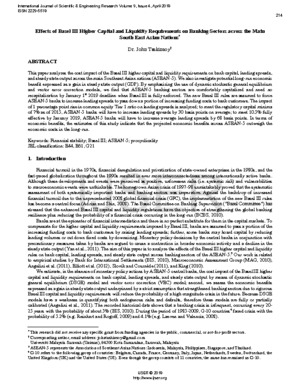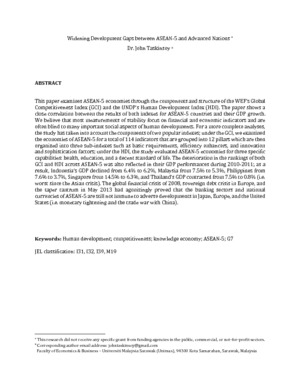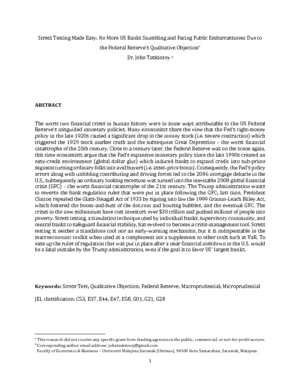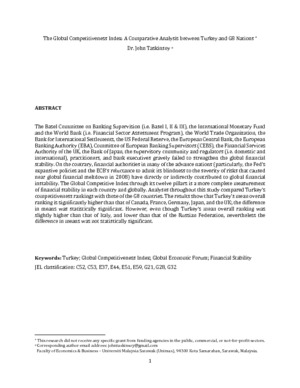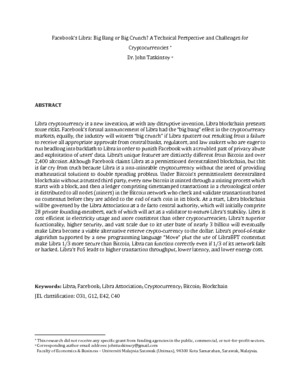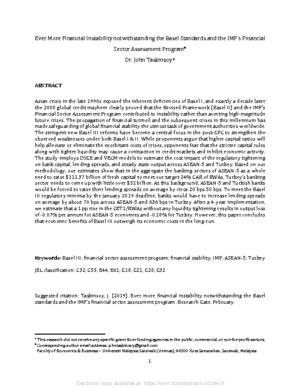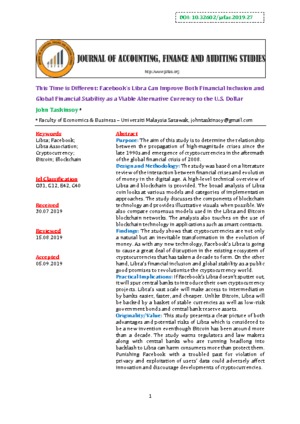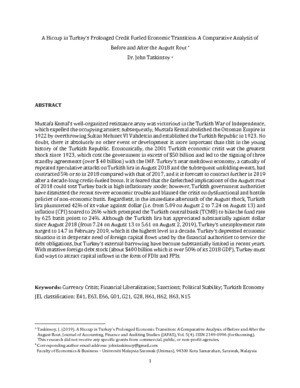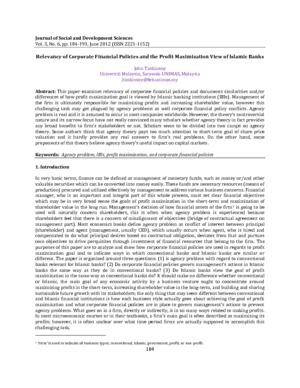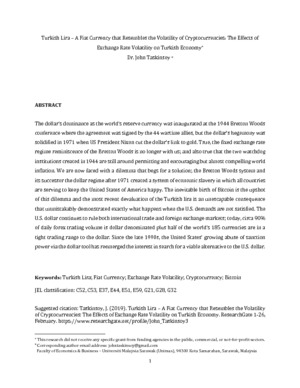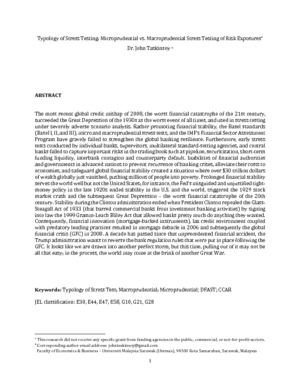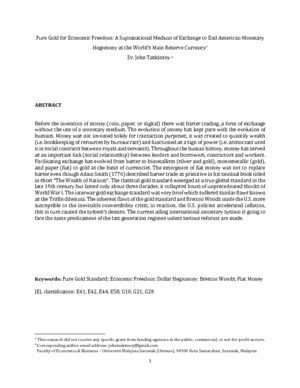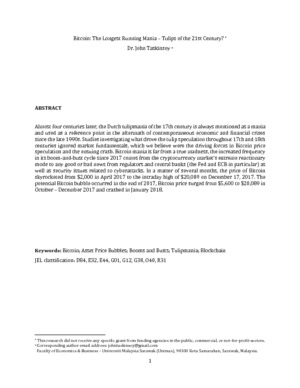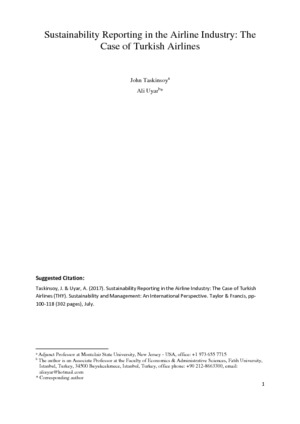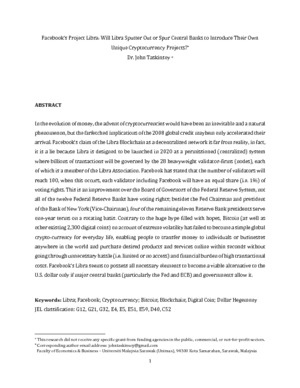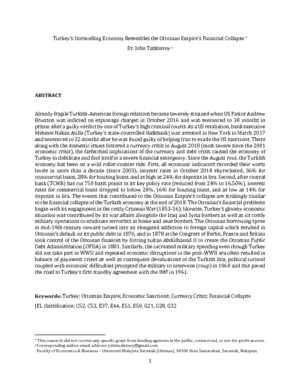- Suggested keywords :
- current(1)
- facilities(1)
- button(3)
- photonic(1)
- smart(1)
List of Categories and SubCategories
Change Your Picture

Higher Capital And Liquidity Regulations Of Basel Standards Have Made Banks And Banking Systems Become More Prone To Financial And Economic Crises
JOHN TASKINSOY
VIEWS
1805
INFO
more

- Category : Business
- Size : 919051
- By : JOHN TASKINSOY

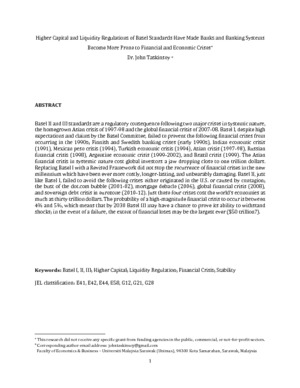

Using Your Google Account
Google Login/Sign up
OR
Recover Your Password
Abstract
Basel II and III standards are a regulatory consequence following two major crises in systemic nature, the homegrown Asian crisis of 1997-98 and the global financial crisis of 2007-08. Basel I, despite high expectations and claims by the Basel Committee, failed to prevent the following financial crises from occurring in the 1990s; Finnish and Swedish banking crises (early 1990s), Indian economic crisis (1991), Mexican peso crisis (1994), Turkish economic crisis (1994), Asian crisis (1997-98), Russian financial crisis (1998), Argentine economic crisis (1999-2002), and Brazil crisis (1999). The Asian financial crisis in systemic nature cost global investors a jaw dropping close to one trillion dollars. Replacing Basel I with a Revised Framework did not stop the recurrence of financial crises in the new millennium which have been ever more costly, longer-lasting, and unbearably damaging. Basel II, just like Basel I, failed to avoid the following crises either originated in the U.S. or caused by contagion; the bust of the dot.com bubble (2001-02), mortgage debacle (2006), global financial crisis (2008), and sovereign debt crisis in eurozone (2010-12). Just these four crises cost the world’s economies as much as thirty trillion dollars. The probability of a high-magnitude financial crisis to occur is between 4% and 5%, which means that by 2030 Basel III may have a chance to prove its ability to withstand shocks; in the event of a failure, the extent of financial loses may be the largest ever ($50 trillion?).
Recommended Papers

